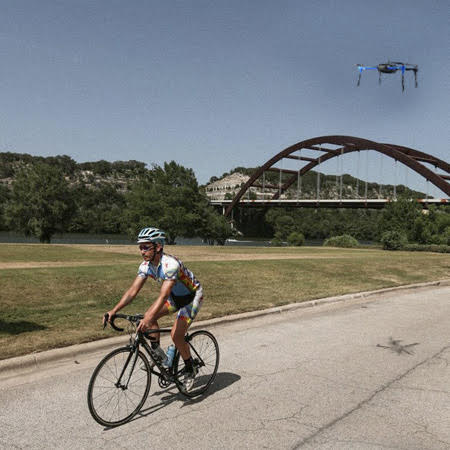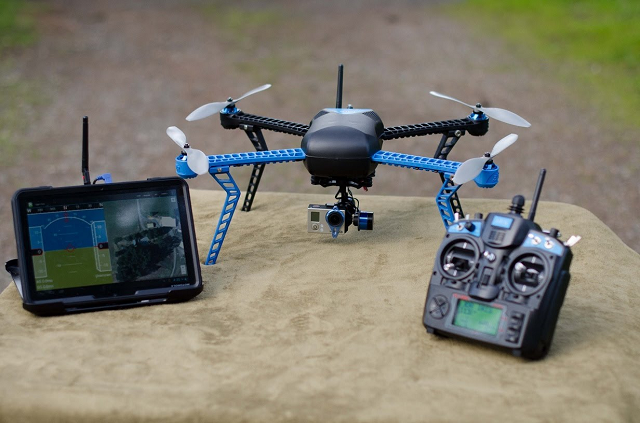
It was only in 2013 when Iris quadcopter drone was launched by 3D Robotics built with drone follow me technology. It can be flown in two various ways: manually using radio remote control or automatically using its built-in GPS with several preprogrammed waypoints.
A year later, the same manufacturer announced their latest drone, the successor to Iris, the Iris+. It has a Follow Me function, which means the drone hover above the GPS Android device operated on the ground. If you attach a GoPro action cam to the Iris+, the quadcopter can be an excellent personal cameraman that would get tracking footage of your every move, whether you cycle, ski, surf, or any other sports.
Scroll down for video

Drone Universities
Drone Follow Me Technology and Stability
If you have a GPS-enabled device, you can activate the Follow Me function so the drone will follow you. Not only that, the drone has a Tarot T-2D motorized gimbal that would allow the camera to take centered shots of you with smooth and sharp footage due to its exceptional stabilization capability.
You have the option to buy Iris+ with or without a GoPro Hero 3+ Silver edition camera, so if you have a GoPro of your own, you can buy it bare.
One of the few features that Iris+ retained from its predecessor is the option for pilots to fly the quadcopter manually using radio remote control or preplan its path on a Mac, Windows, Android, or Linux device. The pilot can trace the drone’s flight path over a map using the free app called DroidPlanner on their Android phone. The copter will go to where you want it to go without you steering it. Additionally, the Region of Interest function will direct the gimbal to keep the camera focus on one GPS point through the duration of the flight.
As of today, Iris is not yet equipped with collision avoidance capability, meaning it can’t detect trees or any object blocking its way. However, it has geo-fence function that allows pilots to set parameters for the flight that if you walk past one of the defined parameters, the Iris will automatically fly back to its launch point. The same thing will happen if the drone runs low on power, it will return home where it’s protected from falls.
The quadcopter can stay in the air up to 15–22 minutes, depending on its haul. If it’s carrying a gimbal and a GoPro, it’s likely to have a shorter flight time.

Parrot Blog
The Iris+ also has new features including the self-tightening propellers, LED orientation lights (so you can identify which end is which when it’s in the air), upgraded power system, and lighter arms and legs.
As the drone market continues to rally, expect to see more advanced and affordable copters. The Iris+ is originally prices $750 (without GoPro), now it has dropped to $599!
Watch out also for the two other follow-me cameras—the AirDog and HEXO+ that are both successful in their Kickstarter campaigns.
Watch the videos below